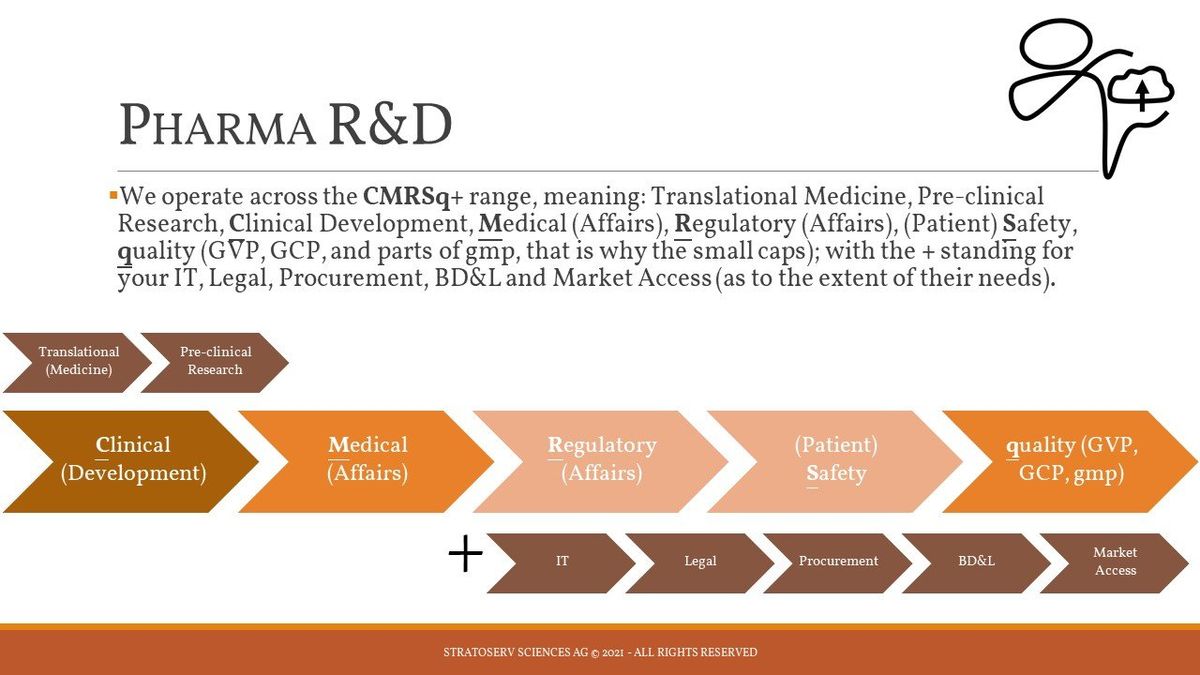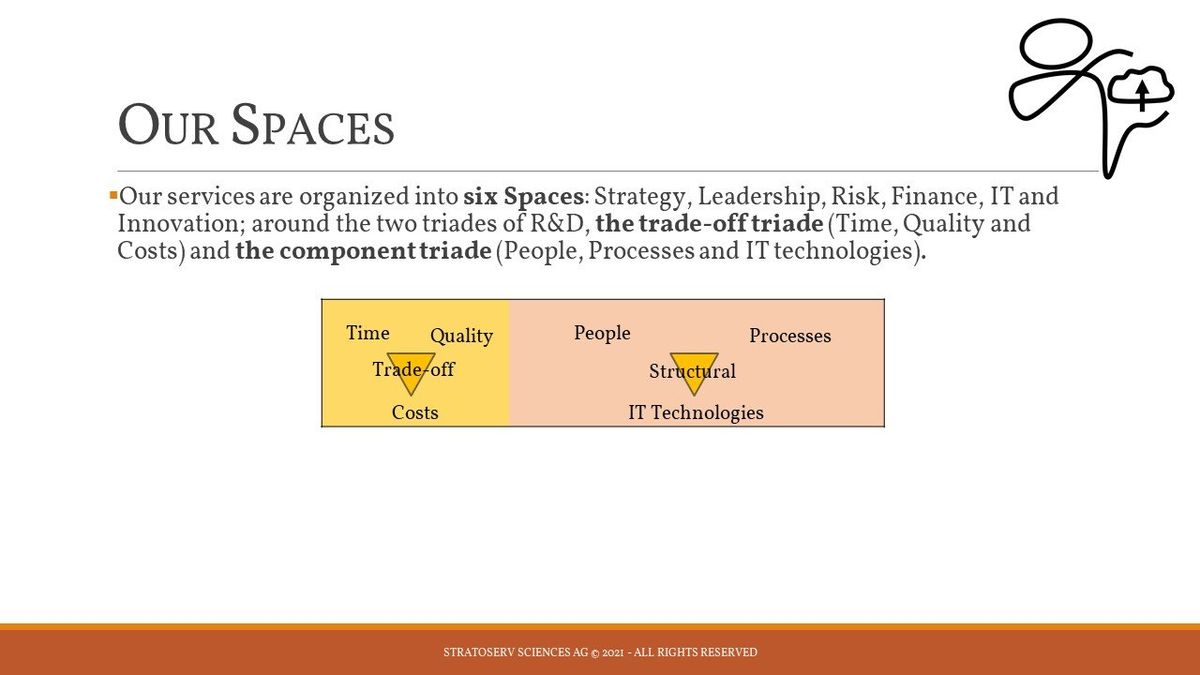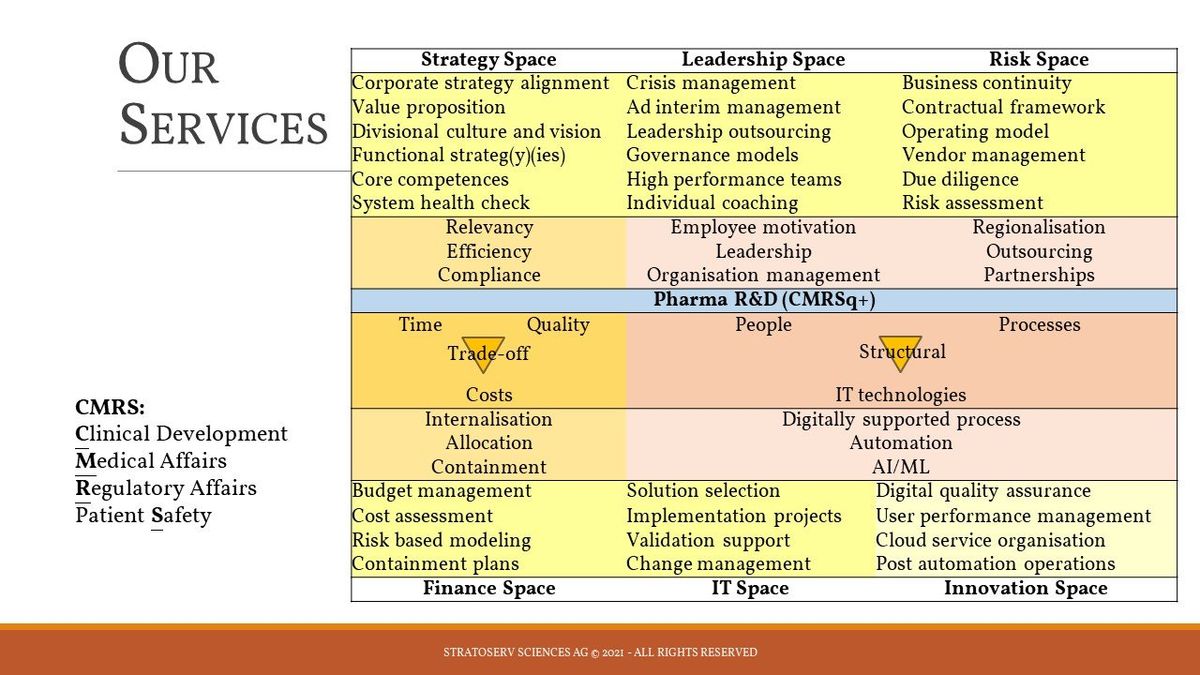OUR VISION
We understand your rules and processes. We guide towards efficiency and compliance. We help you in your challenges, managing your risks, to make sure you put every bit of your resource to the right place, in understanding and harmony with all your stakeholders.
Our natural habitat is the Pharmaceutical Research and Development across start-up to mid/large.
We see you as a living and breathing organization, with emotions and purpose along a strategy. To achieve goals to thrive and grow, and to eventually serve your patients' needs.
Beyond the Cloud we are innovating to meet your stratospheric needs to manage and maximize your user and cloud service performance.
Because we want to put the fun back into your work.
Bildtitel
Untertitel hier einfügenButtonBildtitel
Untertitel hier einfügenButtonBildtitel
Untertitel hier einfügenButton

By Detty Berta
•
24 Mar, 2024
You might wonder how this post belongs on a company website. It is about life, specifically work-life balance. It is also about how community service can change your whole life and how it helped me to get off the corporate career train, which I know many people also struggle with. This is the full-length English version of an interview with our CEO for the HAZ-Magazine. Here you can see the German version as published: https://www.haz.ch/dateien/2024/03/HAZ_Magazin_012024_onlineVersion.pdf Volunteering in the queer community is often not only a commitment and obligation to support a project free of charge, but also a way for many people to find support and stability in a community. - How did you come to volunteer at Regenbogenhaus and with your own working group at HAZ-Queer Zurich? In 2016 I already tried to become active in the community in Zürich, but somehow, I found nothing that really was a fit. Things were either very established or very unprofessional. I also personally did not resonate well with most of the groups where I tried to get involved at. The Rainbow House, which I just like to call as the House with capital H, was something new, not established, in the making. I just subscribed to their newsletter and started following the story of the newly founded non-profit organisation, their crowd funding, and the building of the magnificent Zollhause, the magical multifunctional space where the Rainbow House is also located. The first photos in the newsletter showed the newly laid foundations of the middle Zollhaus building where we were going to be located. Finally in June 2021 the House opened its doors to the public and I started as member of the initial volunteer team: Team Rainbow House. It was times of CoViD, we were operating under restrictions, were wearing masks all the time, and even controlling the vaccine passes of the visitors. - What positive or negative experiences were you able to gain through your involvement? In the beginning there has been very little going on during our opening hours. These are the half days the volunteer team has to cover when the House is open to the public. I remember having spent many Wednesdays and Fridays between 15-19 here with no visitors coming at all. We were playing chess with another trans girl, at least when she wasn‘t sleeping on the couch. The team and the offered activities gradually grew, people started coming and I also got involved as you mentioned in the HAZ work as organizing moderator of the QueerMigs discussion group. We were meeting monthly talking through an arch of topics mainly I gathered and prepared. Was fun and I think people liked the group. I did it for a bit over a year. The group operates now under a different leadership. There have been several negative acquaintances at the House although these will never cast shadow on the humongous volume of positive energies and positive exchange the House gave me. I also made mistakes now and then where I have offended people. It was also new for me how to manoeuvre in the queer community. The leadership of Rainbow House and of HAZ has always backed me up and protected me when there was any offensive, insulting or unfair situation. - To what extent has your volunteering in the queer community influenced your personal development. For me volunteering is more than having found a meaningful occupation, also more than simply the community aspect. The establishment of the Rainbow House accompanied my gender transition. It gave me a reason to dress up and get out of my home twice a week to get compliments, feedback and to exchange on everything trans and non-trans. My feminine gender expression blossomed as I grew simultaneously into the social role and perception of a women. What I got from this community is the most manifest and natural perception of my true gender identity. And that from the very beginning when that short haired overweight binary gender non-conforming person I was started coming. The opportunity to be able to grow from baby trans to where I am now catalysed all other elements of transition that being legal, medical, as well as social (in all other areas of my life, like broader family, old friends, and work). We built everything at the House together from scratch. All installations, offerings, the whole way of operation as well as the actual team was developed gradually and over the past 2,5 years. The time I was also in the making as a woman. Therefore, I can say with confidence: I am the House, the House is me. - How do you believe your background or personal experiences have shaped your approach to volunteering within the queer community? Yes, my Swissness. They say it is very hard to integrate in Switzerland as a foreigner. Should this be true I was very lucky, because I always felt that here nobody is Swiss or Non-Swiss, you are primarily Queer and that is what matters. Even though my German is not Swiss and even me not understanding always all being said in a dialect, I come across. People want to understand me, maybe because it matters what I have to say, they want me to keep sharing my story. And maybe because I also got to understand Swiss German as well as Swiss people better. I can say officially as well as socially I am Swiss now. That is also something I thank the House for, and I see people with not perfect German being similarly welcomed and offered this kind of opportunity for integration as I had. Thank you all. - As someone who has dedicated their time and energy to supporting the queer community, what advice would you give to individuals who are interested in getting involved. As you can see for me the overall benefits, I got from volunteering is an enormous package. But I had to hang in there, I had to keep coming, had to bear withe many boring hours and dull discussions where I was thinking what the hell I am doing here. I was at the right place at the right time, but there is still a lot of room to contribute here. So, I can only advise all interested to come and make the Rainbow House your home. Breathe what is going on, volunteer for HAZ as well, enjoy the events. Invest and see what you get out. Keep hanging in there and the House will grow you into its tissue and body. And that is probably the purpose of volunteering: belonging at where you are seen.
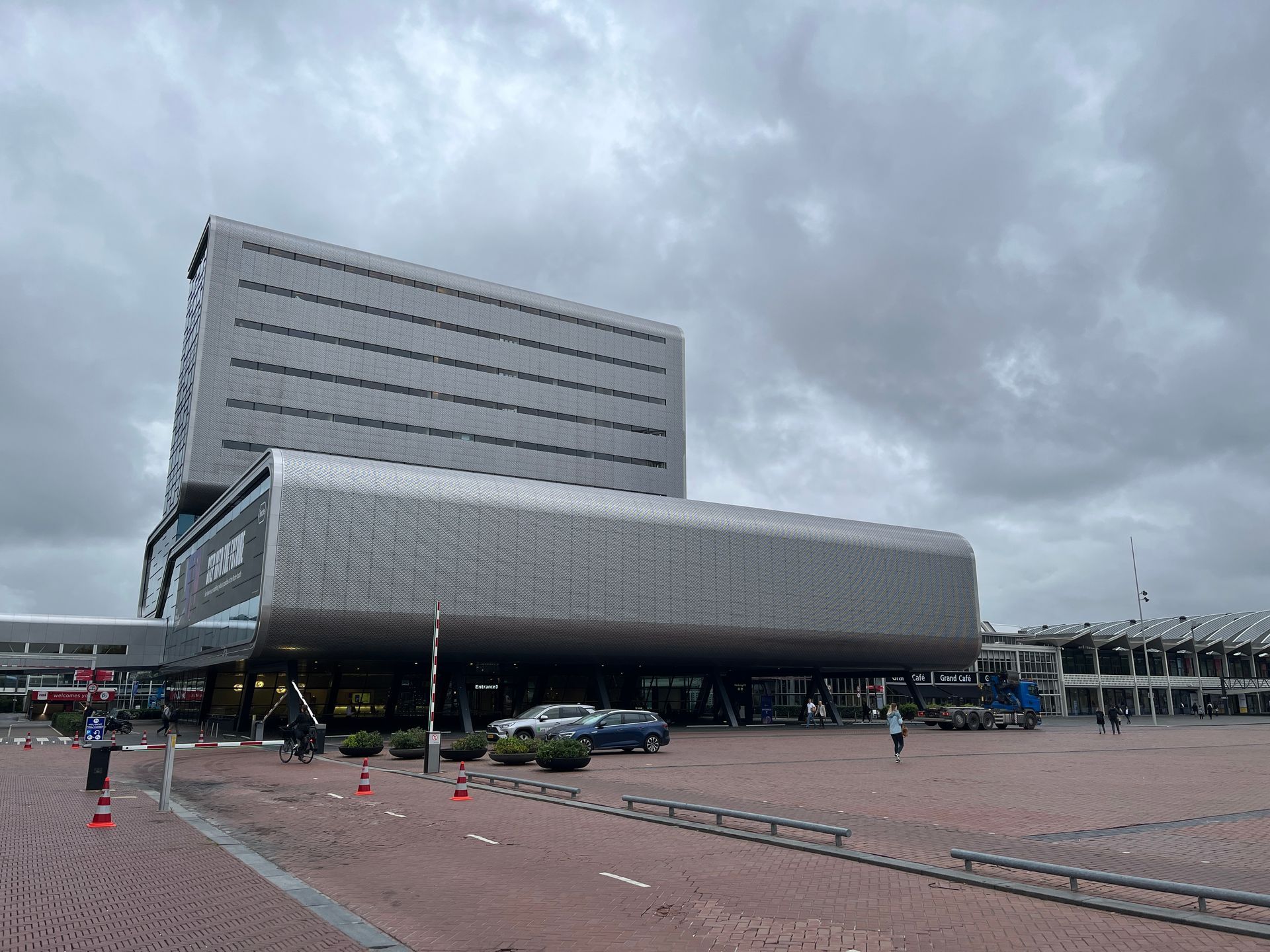
By Detty Berta
•
10 Oct, 2023
As if the Covid never happened. We can travel free, and we are keener than ever to do so. I was hoping for some consideration at least, some self limitation or selectivity in what we do and where we go after the lockdown; which will surely be one, but maybe not the last of our generation‘s life traumas. I thought it has changed us as these kind of traumas tend to stay with you and internalize into your mentality. Maybe I am naive, maybe millions can also live a happy life with war around. What I was not expecting though is such a capitalist and purely commercial vehicle of our desires to be out and to be social (again). To relax and to forget. To remember and to nostalgize. To falsely self-reassure, that things are back to normal, that the world we once knew and loved recovered. Our social thirst had to be quenched, because it grew greater than ever, and organizers understand and will give us what we need: a quick, but expensive refreshment. Maybe one hundred very similar companies exhibiting seemingly very similar things. Some I seem to remember, but many are surely emerging new. All very ambitious, claiming full competence. All end-to-end, all with propriety innovative and mature technology. All know pharmacovigilance inside out, as if it was a one-hundred-year-old profession and they learned all they knew from their fathers’ fathers, and who will surely pass on the secrets of this sacred profession to the next generation. And then you get tired, the discussions are damn similar: we can do everything for you, just tell us your needs (give us your money). There is a suspicious food pyramid showing its outlines with a few company alphas and there is a tribe of betas and gammas following sweeping up from after another. Services to fix services, delivery teams to fix deliveries (not delivered). Glamorous software platforms which we do not live as daily realities while the prospects and promises are way beyond science fiction. You try to seek escape, to soak in some science, to learn, to expand thought horizon. That is when you realize you are in a presentation factory, you are lined up in not even proper conference rooms, but more stalls or circus tents where you get cabin size scientific refreshment drops, brought to you in a condensed rush; an assembly line experience where the noise of the other tents amplify the frustration of the tube fed consumption of what should be a peaceful celebration of the core of our profession: pharmaceutical science. There is no free meal as there are no free tickets, although nobody at this event paid as a participant. The bill was still high, the city is expensive the sponsors were probably also requested to reach deeply in their pockets. It is like a long restaurant stay with a few more drinks than usual, whereafter nobody seems to remember who took the bill, somebody must have. But it was fun, like a class reunion of pharma and vendor colleagues who have been circulating around in different employment positions around the different classes of companies. The event cost is in your transaction fee of your procured tech and human services. These two days represent a few Euro cents in each and every case you processed or had processed, or else it was saved on resource to correct a bug in your system or from the salary of the person eventually writing your aggregate. So, it is you taking that bill at last, it will be slipped into your daily struggle with the vendors you had just quite a lot of fun with. Please remember that. You may ask yourself: Should I feel bad? It is like that in all industries. What can I do about it? Well, I wrote this piece, I made myself look beyond the friendly welcome of the organizers, the small treats of the vendors, the seemingly highly scientific agenda, the class reunion feeling. I am not allowing myself the illusion that I got what I wanted. I am disillusioned and I am urging all to be disillusioned. We need to be more demanding; we need to be more self-conscious and uphold professional ideals. Participants and vendors as well, we need to vote together with our attendance, and we need to consider going next year because it was not bad or not to because it was not good enough.

15 May, 2023
Procurement control and methodology has penetrated all pharma organizations over the past years. It is a sign of maturation, a professional attitude with the hope for right spending. Procurement functions were established and are growing in importance; and have occupied the space between the budget owning business functions and the vendors offering services and solutions on the market. Request for Information and Request for Proposal processes, especially with the kind of exclusivity as they are applied to all procurement activities have bred a new art of growing vendor businesses, the ones that can actually win RFPs. It is kind of an artificial evolution fuelled by the companies themselves who are trying to safeguard their functions and budgets and ensure external services and goods are delivered at optimal price and quality. A false expectation. There is nothing implicit in an RFP process that will guarantee that the selected vendor will be able to deliver or deliver at utmost satisfaction of the requesting business functions. These rightfully feel that despite the lengthy and resource intense participation in the internal RFIs / RFPs they do not seem to be able to access truly matching, tailored solutions with really high utilization and maximum benefit for the cost. RFPs are actually not allowing small and innovative vendors to get in the game, to get experience and reference and to be able to successfully compete against the bigger ones who are already in there. As if the sports game was restricted to the more mature and experienced players, who might long not at all be at their peak performances or have not even ever been really talented ones, but they are established and equipped to dominate the game field while RFPs like fences with security thugs even help them by keeping the young ambitious talents out of the stadium. How many times did we see that the winner of an RFP: • could not maintain professionalism, the business know-how which they seemingly demonstrated in the selection process, • that the quality of the documentation for the RFP was significantly superior to anything they were able to produce in the implementation of the project, • that many of the promised advantages (even critical to having been selected) were simply oversold, augmented (if not even truly lied about), • that there is no actual capacity or interest in the vendor organization, many times long term overloaded and underdelivering (exhausted) for a quick success, • and could not actually even maintain the price level which was scrutinized and was determinant in winning the RFP itself. As a wrongly made marriage match, it is hard to undo an RFP, there are shared interests not to declare a new project a failure even if the root cause admittedly is the inappropriate vendor selected. Attempts to repair, penalize an eventually prepare for mid term separation from the vendor will start culminating the suffering of the business in a new and lengthy RFP process. It is a vicious circle, hard to be broken from within the procuring organization. What can you do to avoid these traps without having to move away from wanting to apply a traditional procurement concept or to fundamentally change the roles between your procurement and business functions? Be flexible and be clever. Instead of shortlisting the usual or just well-known vendors of the market segment, allow business functions to establish partnerships, network with potential vendors of all kinds and select promising new relationships to develop new collaborations on. Give free passes to ambitious runner-up companies who if they speak the same language and resonate well with the needs and representatives of business, might turn out to be surprisingly good in the actual implementation and rendering of the desired services and solutions. At StratoServ Sciences we can also work with you in similar situations, we can be there to act as the third party between your procurement and your business function. We can help you to create a better mix of potential vendors, to ensure that innovative new solutions are also represented in your selection process. We can help to accelerate the procurement process, which many times due to the uncertainties about the nature and the actual needs of the business function cannot even formally start right on time. We can work with your business side to establish and mature partnerships before and during the RFPs to make much better matches for much better quality and utilization. This many times needs unorthodox thoughts and approaches. Do not be afraid to provide information or create any situation which puts a vendor into advantage if it actually serves the interest of your organization, if it even reduces the costs. Pre-consultations and complimentary consultation projects, preferred vendor concepts, involvement of such in related RFPs (e.g., technology basis of the future service) can enable companies to really mould into the ideal partner for your business needs, keeping the purpose and ethics of procurement also intact. Think of your functions and related budgets as eco-systems. Allow bias in vendor combinations when advantages occur on the system level. Look for and factor in any external effect of the service you are setting up across the whole of the eco-system. Emphasize and promote overarching vendor solutions or solutions which off set costs at other parts of the system. Procurement cannot comprehend such business complexities and inter-dependencies without partnering with the key experts of their business functions, and if there is need to catalyse such thinking, you might want to bring in external help like us specializing in management of eco-systems. If you feel that you and your company is in a similar situation, if you are frustrated and feel cut-off from the right services, if you think all vendors are bad and this whole outsourcing thing is a simple waste of time and money, and if you feel procurement concepts applied are not helpful, then the above thoughts might have resonated in you. You might want to rethink rules of your game, your stadium, who you let in to play, and you might want to lend your security guys a helping hand to ensure right ambition and talent is let in and is allowed to become your stars.
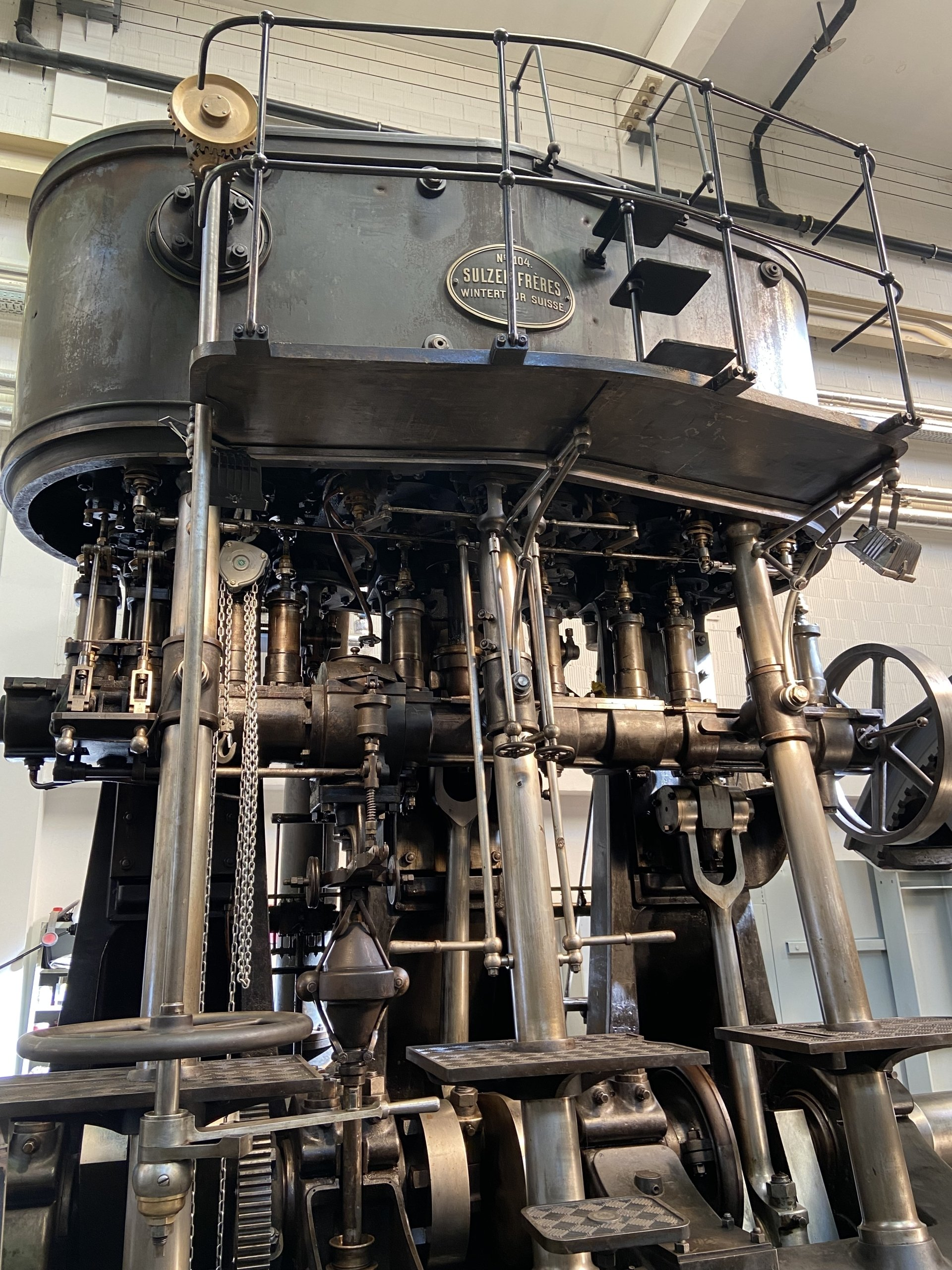
By Andras Berta
•
11 Nov, 2022
We probably need to change the way we select our PV database systems. You also do not go buying a car with a home drawn blueprint in your hand. It is impossible to expect from the business users to have to describe a PV application’s all much needed functionality in its totality from scratch on their own. You also do not start describing a car by having four wheels, a steering wheel, an engine, and a chassis and then break it down to details. You kind of assume that the leading car manufacturers do know what a car needs to entail and are able to deliver the bundle of functionality you need from it. You could though check some references of the car manufacturers you are looking at, what quality certifications they have, see how their cars are authorized for sale, check their crash tests, read some reviews from professional testers, or simply browse some blogs to see what people think of the companies and their products. But do you do this? Most probably not. You rely on the common understanding which brands are considered to be decent mid-range manufacturers and you trust them as long as they are legally represented in your country. But will you be able to stand up to the question did you evaluate this or that critical functionality of the product during the evaluation to make sure it meets all your requirements? Have you checked the Follow-Up features for example to see if they can really schedule your three attempts and fire your targeted questionnaires appropriately so that your FU is end-to-end automated and handled within the system? You could have tried. You could have compiled a long list of questions and could have spent hours in demos and reviewing vendor responses to figure out if the FU features are 100% mature and are going to work for you. But what is with the other 300 important elements of your PV database application? You will take your PV system candidate for a spin though. A vendor demo environment will be your showroom car and the short road trip nearby the dealership will give you a pretty good impression how the cars feels to drive, how it handles and you will be able to try out and see many of the key features of the vehicle on the road. You will be able for example to turn on the lane, distance and speed limit assistant, but you will not be able to definitely say if the drive assistance functions will be truly comfortable in all aspects over a multi-thousand-kilometre-long ride as well. Like with a car dealer the vendor demo and sales team will have a time window for you. The dealership closes at five and you will not be really able to spend unlimited time with an unlimited list of questions which the dealer him/herself might not be able to answer at all. It is not polite to interrogate, there is a common-sense level of detail of your interest which can be catered at the dealership in a standard sales process. Very similar to how your vendors will work, regardless how wicked your procurement process might be. And what you also do not do when buying a car is look at the manufacturer’s development roadmap. It would probably not even be disclosed to you even if you specifically asked for. The firms use their innovative plans in messaging and raising brand awareness. They might build and take concept cars to car shows, but these plans are usually not discussed in the sales process at your local dealership. The purchase is based on what the car can do here and now. You rarely even factor in the amount of innovation that should be coming in the vehicle line of your choice when signing the deal. - I like this feature, is it already available or coming? - It is available. - In the version we are going to go live with? - No, in one of the upcoming ones. - So, it is coming. - It is on our roadmap. - So, when will it be available? - Let me discuss with our product team and get back to you on this. If the above discussion is familiar to you, you might have been part of a selection and procurement process of an IT tool for your Pharmacovigilance function. Come on, you cannot base your decision on the uncertainly around all the innovative new features. You will not be able to get time guarantees on when these will arrive in the upcoming product versions. Even less will you be able to assure that they will be delivered in a mature state or even truly get to know their current capabilities. Even vendors are neurotic about these situations when their true innovative roadmap is being scrutinized. They fear all other merits of their tools and offerings will be disregarded and innovative automation will be the number one deal breaker in the heavy competition of the leading vendors, who are very different as companies and have very different approaches to the product development as well as to innovation itself. So, unless you need to buy something really cheap, and a mid-range car is usually not that cheap, the choice becomes very preferential. You need to look at your history you have with the brand, your previous experience and all what you know about their cars. You need to ask yourself the questions, do I like their products and approaches generally or am I up for something new. A good old German brand will not compare to a Tesla. You will have tradition and legacy with moderate pace of innovation, while on the other hand you are sitting into something you are not yet very comfortable with. Will you reach your destination in both options? Yes. Will the ride be different? Yes, but it is about your liking. Do not be married to your current vendor though, always ask the question: Will my life be better in another car from a different manufacturer? Does it matter if they have a traditional dealership nearby, where I know the guy, who sold me my past few cars already? Do you trust new millennial brands with their different approaches and claiming to break the status quo or you want legacy, and cosy conservatism? And if you say new ways are nice but let them grow and mature remember you can still give your current brand another go and keep assessing the ambitious newbies and be ready to switch over in 3-5 years. As the history of long un-touched on-premise PV systems fades in our memory we also need to perceive our data in the relevance of here and now. As migrating between systems of different data structures have become very common, and with the transaction-based SaaS Cloud model vendors have set the scene for a dynamic customer strategy. That means that unless you are tired of being continuously in “project implementation mode” you could theoretically be continuously evaluating the competing systems and switching in-between platforms as frequently as in every 2 years to keep getting the maximum benefit out the offering financially and functionality wise. Maybe it is the beginning of a new era, which might also force vendors to focus on their offerings, to sell current capabilities and not worry about losing a client so much, because a good brand will reattract customers even if they have set out to drive other cars for a few years.

By Andras Berta
•
07 Apr, 2022
5 signs of DRIFT: 1. E-Mailing becomes counter-productive 2. Meeting-to-meeting mode shows with jammed calendars 3. People take comfort in the rule and the detail 4. Efficiency improving initiatives become unappreciated 5. The busyness bias kicks in or the travel excuse is used Prioritization is key to focus and optimal output and is a shared task of line manager and employee. As resource is always (perceived as or objectively is) scarce prioritization is key to organizational success. Regardless of the delta between the workload and the organization’s productive capacity significant volumes needs to be secured on must haves as well as on innovation . Must haves are tasks and activities which will suffocate and bring down the organization in a relatively short time if neglected. These include things like invoicing, orders, salaries, customer deliveries, so cash related stuff, but also help related , like interviews, hiring, outsourcing contracts, work orders. For organizations working in regulated environments in addition all key compliance related items belong in the must haves. Innovation is your future or to turn it around: it is without what your organization does not have a future. These include obsolete technology and process changes, or introduction of mandatory technology, standards, or certifications, but also essential process improvements, efficiency increase measures. Everything that is needed to sustain business and productivity under the changing future conditions. Not all innovation contribute to the vitality of the function only internal innovation is, while external innovation will serve the better functioning of the broader organization. Role of the leader is to ensure that a fair amount of the capacities is reserved, allocated and utilized for must haves and internal innovation. It can be 15-20-30% for each, but it should not be 3% and probably cannot be much above 30%. It is up to the squeeze of the leader, but the squeeze must be there and exercised, otherwise really, we can stop working and dismiss the whole organization. Without must haves there is no present; without innovation there is no future. How does this relate to the signs of DRIFT? 1. A person or an organization in DRIFT will not be able to ensure the above, will not even be able to differentiate between must haves, innovation and other necessary or even unnecessary tasks. This is where you feel you cannot get through the inbound emails, that even important messages slip though the cracks, go down in your Inbox or when you need to start explaining to people that just because he/she sent an email about a problem he/she cannot consider it done or assume that you are dealing with it. 2. When you do not (need to) plan your days, you just follow your Outlook calendar which will drag you from one meeting to another like a dead body or a zombie without own power and will, not allowing you to do practically anything else for most of your working time. You forcibly need to cancel, clean a few hours and block time for actually doing things: for sitting down to write a document, to develop a concept. 3. Although supposedly very occupied, people find time and energy to clarify all details, to regulate everything around any problem that is presented in the meetings. What they are really doing here is taking a rest and allowing themselves some extra time to get at least one thing right and to forget about all the other things which would need attention for a moment. This is when you see immense commenting in a document review or complex process rule proposals for relatively infrequent or low probability events or occurrences. 4. You feel scepticism and pushback from your colleagues on any new idea, initiative, or change, even if it is just a minimal additional effort, an extra administrative step, invitation to a short workshop or any minor change to the procedures, even if there is demonstrable or expectable gain in efficiency. As if there would be no way to help, and as if the carried weight would not allow any stop or course adjustment and as therefore there is also no receptiveness or interest in change of any kind. Even talking about workload takes time away from carrying the weight itself. 5. And we are all doing our bests for the company. We deserve respect for that, but only for the dedication, because what we would really deserve is an environment in which we can be really productive (and innovative). This is the busyness bias , where we do not see that our well-meant efforts are not really moving things forward. Frequent mandatory business travel makes this even worse, as we are really taking business holidays, and in this time our base work just keeps piling up. Well at lease we can say we were travelling that whole week… What can you do as an individual contributor, a manger or as an organization do when you see the signs of DRIFT. You need to talk about it surely openly, share the realization and the fact that you need help. You need to re-calibrate your priorities vs your resources, you need to ensure must haves, internal innovation, you need to bring in innovation if needed and you need to start transferring good efforts to good outputs. You need to answer the questions: Does it make sense what I am doing and how I am doing it? Does my organization have a future? And if you cannot answer these questions or you do not feel that the right solutions can come from within, ask us to help.

By Andras Berta
•
13 Jan, 2022
I often use the chess analogy when talking about leadership and people management. My question is: What does chess have to do with leadership? I usually get back an answer related to having to have a strategy, that you need to think multiple steps ahead, know your opponent, be able to adapt and make decisions, but I am more interested when I get another answer back: You need to know the figures! Then I start asking about the pawn. How does it move, how does it strike, what are its limitations, strengths and whether there are any special situations the pawn is involved in. The answers are: it can only move a single field forward, strikes diagonally one field far forward, limitation is in the movement, strength lies in number (being 1 of 8 pawns), special situations are the first move can be 2 fields, pawn is part of castling (front wall of the barrier protecting the king in this special move) and lastly the pawn can be exchanged for any fallen piece (even the most heavy piece the queen itself) if it reached the first row of your opponent. Never underestimate your figures, see the pawns are limited in movement and strike, but they are many, and in some situations, they do have critical capabilities, which you need to be conscious about. OK, let’s take the bishop. The bishop moves diagonally without limitation as far as the fields are free back and forward. The strike is the same, no special situations I know of involves this piece, but there is a serious limitation of being limited to one colour field. A bishop will either be on the blacks or the whites. By this time it is clear, that the leader as the great chess player needs to know the capabilities of its people in great detail, including the weaknesses as well as the special capabilities to be able to position them in an ideal way and number depending on the challenge and the organisational situation at any point in time to succeed. Let’s take the rook. Rook moves vertically and horizontally until its blocked, also strikes this way, has no true limitations beyond not being able to move diagonally and is key in castling. Here it can jump over the king from its initial corner position to the bishop’s spot locking and protecting the king in its “castle”. Now to the queen. What is the queen really? It is the combination of a bishop and a rook, combining unlimited movement and strike capability in all directions, no limitations and the biggest speciality of this heavy piece is being alone, while being most wanted to be taken down. The queen is also most likely to be recalled by the pawn reaching last row. The queen has not always been the most powerful piece, in earlier versions of chess the rooks were the most dominant pieces, that is the reason why the rooks appear in many historical coats of arms (as flag or shield symbols representing strength). But could the queen be even more powerful? Yes, a super queen in the future of chess could also combine its strength with the knight. What is so special about the knight? I leave this figure to be last in the discussion on purpose. Well, it is the move it can make this very special L shape in any direction taking the knight 3 fields vertically and one field horizontally (or vice versa). Yes, but what else? What can a knight do that no other figure can? It can jump. Yes, the only figure with its special L move, but passing over other figures. The knight adds the third dimension to chess. Now, why is the knight even more special when looking at it in light of the queen? Remember the super queen, the knight is the only piece who’s move is not owned by the queen. And what super-power does that give the knight? The reason I am doing this chess analogy is to make sure the very simple, but key message to leadership and being a great leader is knowing your people really sinks in. And this knowledge cannot stop to grow or become passive. You continuously need to work on this, keep assessing and getting to know your folks, how they work alone and how they work together with your other profiles. How their dynamics are in their numbers on expert as well as on management levels, where will your hot-shot fail, but where your less valued profile will contribute so much that can be a game-changer for your organizational success. Just like in a game of chess. In chess, like in an organization all figures are ranked, and have a commonly recognized and agreed value. When you strike or counterstrike you decide or at least factor in if you are losing a piece for a heavier one or not. When your pawn walks into the last row, you will most probably want to get your heaviest piece, your most valued figure back. But be always aware that ranks and titles, similar to the values of figures in chess do not show objective and opportunistic values of your contributors either. As a leader you will need to fine-tune your organisation to position your profiles in the combination which is exactly right for the given organizational situation given in space in time. If you can do this you will ensure maximal organization output and will increase the chance of organizational success, whereas this delta, this increase is also measuring your leadership and success. The knight is the only figure which can threaten the queen from a field where the queen could not strike back to.
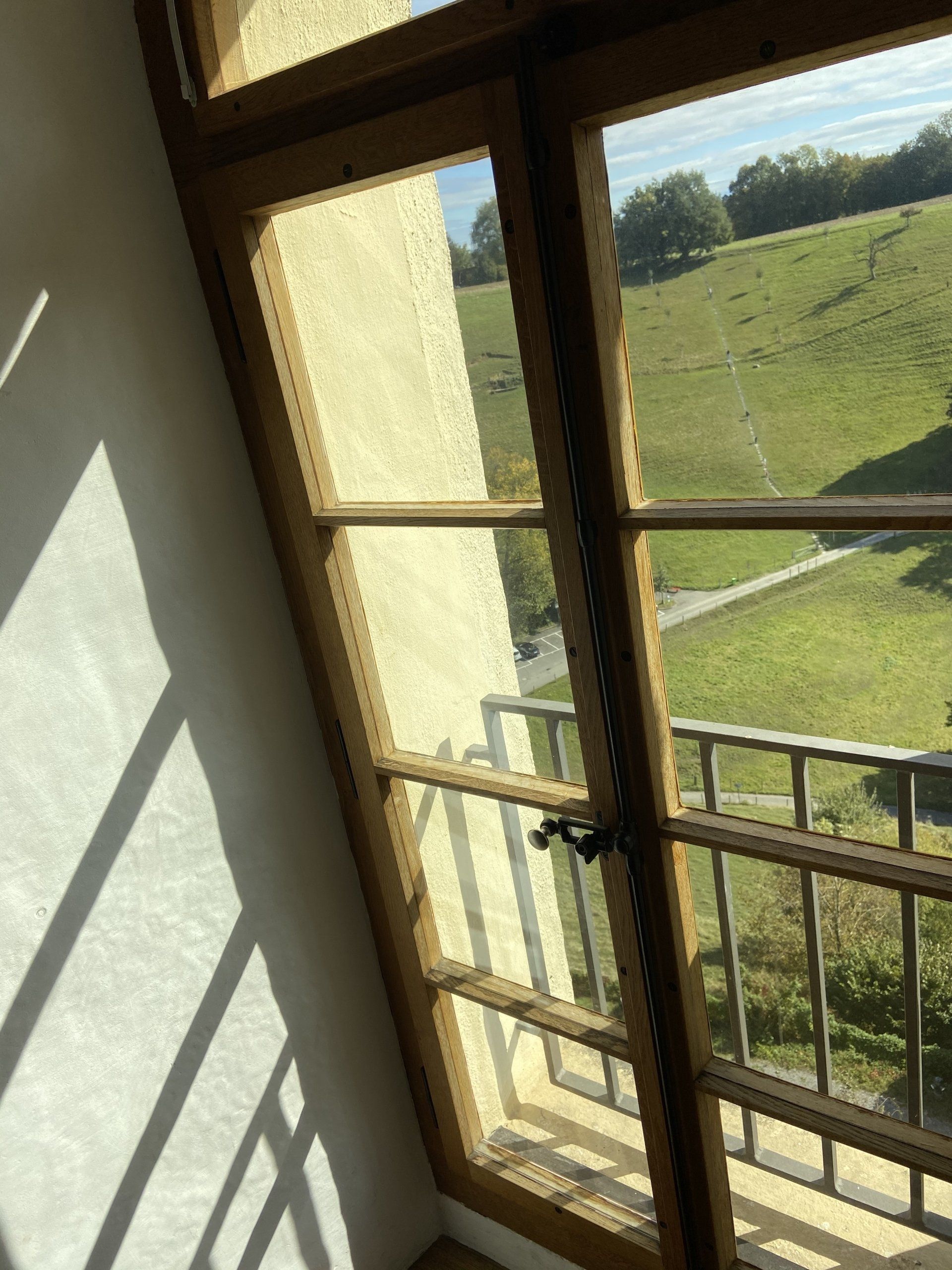
By Andras Berta
•
13 Jan, 2022
I would like to confront and give three counterarguments to those who still believe that people at home will not work as much and as hard as they would work at office; and that the time at office needs to be measured as it is the only true indicator of employee performance. Still today in the middle of the COVID-19 lockdown, which did promote and propagate for home office, and while many companies recognized the possibilities and gains priorly unexploited by not giving people home office as an option, many top decision makers are still thinking right now how and when to bring back those office folks to office (where they belong) for them to be able to see them really work. Well, I can tell you, you are issuing extremely poor certificates of yourself as a leader, because if office presence is required to ensure your reports are actually working then your prioritization / task allocation / motivation framework, which as a leader is core part of your job, sucks. Let us explore these one by one. Resource is always scarce, and even though it would be a very interesting experiment to see how an organization would perform if endless resource would be granted (as long as it can be justified and meaningfully utilized), all leaders have to prioritize; and prioritization cannot mean that you say everything is important, all tasks need to be done. As a leader you need to accept the fact that prioritization must be a compromise from your angle; to gain the privilege to be able to secure must have tasks, you need to accept that anything above your total capacity will not be done or will be dirty work at low quality. This is even more scary, but true, when you are managing at below 100% capacity. The task of the leader is to make sure people always know what these must have tasks are, and that they need to dedicate a significant part of their work capacity to meet these. In addition to this it is your task as a leader to secure a significant portion of your employees’ capacity for internal innovation; as to work which is for the future, without which the performance and output of your organization will only stagnate or deteriorate. If you have secured these two, based on your guidance, employees should still be able to select the more important tasks for the remainder of their capacities and you should be roughly aware of what these are. So, if your employees are not working efficiently in a home office setting, you sure have failed as a leader to have set your prioritization right. Secondly, if your employees lose their productivity at home and their product is not immediately missing; the lack is not showing and hurting, by kipping over your downstream processes, you might be wanting to ask yourself the question: Is their product really needed? Are they set to the right output? And hell yes, making sure your employees’ work is relevant and allocated to the necessary right tasks is your core job as a leader. The third bad self-certificate that can be issued as a home office sceptic is on motivation, because if the above two factors are not in the way, and your folks still don’t function well in their home offices, then it lies in their lack of motivation to work. Guess whose job it had been to build up and continuously maintain high levels of employee motivation? Yours. So, until it is even possible to revert all employees to full time office presence, there is time to re-state the question: Why would people work hard in home office? to Why would people not work hard in home office? and ask the: What have I as their leader done to make them independent, empowered and efficient?

By Andras Berta
•
16 May, 2021
Despite the multi-decade maturity of this topic there are some trends which are worthy of careful consideration as they could lead to ground-breaking changes to the face of Business Process Outsourcing in PV. Is the industry still happy and settled with large offshored outsourced operations? Do we get all the value out of these many times demanding inter-company relationships? Is there a next level we can reach in the collaboration? Has outsourcing changed industry itself and how we work? Or is there a reality coming for something quite different? What if at your large restaurant the ingredient processing and food creating technologies are changed rapidly in front of your eyes, making many of the more basic roles in your kitchen obsolete? What if the machine is coming up with better and better recipes, the automation is doing most of the cooking? How does that change what your classical cooks and sous-chefs will have to be adding on? Will your waiters have to serve differently? Will your customers be able to digest and reach satisfaction? What if a global event, like a pandemic in addition changes the whole dining and restaurant scene? What if your guests suddenly stay at home and start demonstrating totally different consumption patterns, when your events become remote, when catering needs to be done also at home, when your expensive ingredients from far away stop coming, or get spoiled along the way stuck in a container in the Suez Channel? What cooks can do in home-office, who will pay for their broadband and will all your waiters need to get a driver’s licence? This presentation will be outlining a potential brave new world that pharmaceutical patient safety organisations as well as their CRO partners will have to be actively shaping as well as adopting to.

By Andras Berta
•
03 Mar, 2021
Under the Leadership Space of our services, we do offer Leadership Outsourcing as well as Individual Coaching as part of it, but what does Leadership Outsourcing mean at all? In our view it is the possibility to boost and enrich your in-house leadership capacity, which is a intimate relationship and the service has to be very trustworthy and relevant. Leadership takes a lot of time and energy and even through it is clearly part of the job (description), usually remains intangible, and will not be materialized in the performance appraisal, or even be recognized as a merit. Time needs to go into your vision, you need to invest into a strategy, both need to be communicated, you need governance and team leadership, you need regular time to discuss and align and you need to shape and act out your own organizational culture as well. Who has the time to do all of this, right? How will the invested energy return on investment? If you browse through the topics of the leadership coaching, we offer, you will recognize how big of arch we are making, starting from the individual leader, then looking at how the person is embedded into the closer organization. After that we explore the matrix of prioritization, workload and motivation, how these three determine and impact the actual output, the actual effectiveness of the individual leading the team and the team itself. We drill deep down into intrinsic motivators, we want to go under the skin of the leader, to understand that "Why?", because without that you cannot create the environment culture that fosters high performance. We look at team leadership and how can you reach that high performance team status where your key talent can thrive and outperform what the sum of their individual performances would be. The arch lands us back at you, is your future clear, are you on a path and is the right one. Will I further succeed in my organization, am I at my right place, am I getting through am I heard and am I nurtured, developed and motivated as what I am giving to my leaders. The coaching if fully scaled and tailored to the individual’s needs. Adjustments can be made any time, and the time is also helping structure and address current challenges of the individual. Are you interested as an organization or as an individual? Drop us a note.


